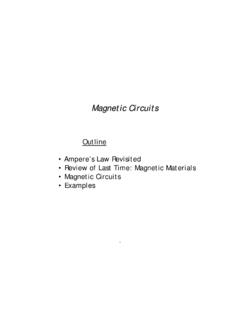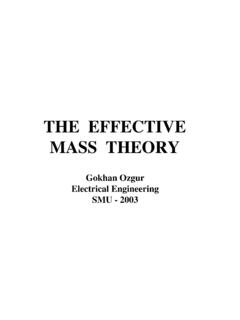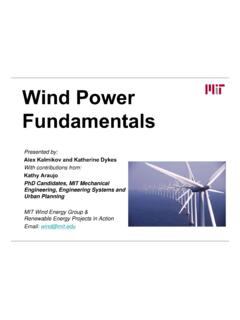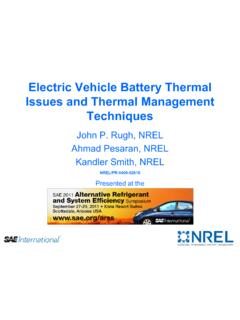Transcription of Chapter One ELECTRIC CHARGES AND FIELDS - NCERT
1 Chapter One ELECTRIC CHARGES . AND FIELDS . INTRODUCTION. All of us have the experience of seeing a spark or hearing a crackle when we take off our synthetic clothes or sweater, particularly in dry weather. This is almost inevitable with ladies garments like a polyester saree. Have you ever tried to find any explanation for this phenomenon? Another common example of ELECTRIC discharge is the lightning that we see in the sky during thunderstorms. We also experience a sensation of an ELECTRIC shock either while opening the door of a car or holding the iron bar of a bus after sliding from our seat. The reason for these experiences is discharge of ELECTRIC CHARGES through our body, which were accumulated due to rubbing of insulating surfaces. You might have also heard that this is due to generation of static electricity. This is precisely the topic we are going to discuss in this and the next Chapter . Static means anything that does not move or change with time.
2 Electrostatics deals with the study of forces, FIELDS and potentials arising from static CHARGES . ELECTRIC CHARGE. Historically the credit of discovery of the fact that amber rubbed with wool or silk cloth attracts light objects goes to Thales of Miletus, Greece, around 600 BC. The name electricity is coined from the Greek word elektron meaning amber. Many such pairs of materials were known which 2021 22. Physics on rubbing could attract light objects like straw, pith balls and bits of papers. You can perform the following activity at home to experience such an effect. Cut out long thin strips of white paper and lightly iron them. Take them near a TV screen or computer monitor. You will see that the strips get attracted to the screen. In fact they remain stuck to the screen for a while. It was observed that if two glass rods rubbed with wool or silk cloth are brought close to each other, they repel each other [Fig.]
3 (a)]. The two strands FIGURE Rods and pith balls: like CHARGES repel and of wool or two pieces of silk cloth, with unlike CHARGES attract each other. which the rods were rubbed, also repel each other. However, the glass rod and wool attracted each other. Similarly, two plastic rods rubbed with cat's fur repelled each other [Fig. (b)] but attracted the fur. On the other hand, the plastic rod attracts the glass rod [Fig. (c)] and repel the silk or wool with which the glass rod is rubbed. The glass rod repels the fur. If a plastic rod rubbed with fur is made to touch two small pith balls (now-a-days we can use polystyrene balls) suspended by silk or nylon thread, then the balls repel each other [Fig. (d)] and are also repelled by the rod. A similar effect is found if the pith balls are touched with a glass rod rubbed with silk [Fig. (e)]. A dramatic observation is that a pith ball touched with glass rod attracts another pith ball touched with plastic rod [Fig.
4 (f )]. These seemingly simple facts were established from years of efforts and careful experiments and their analyses. It was concluded, after many careful studies by different scientists, that there were only two kinds of an entity which is called the ELECTRIC charge. We say that the bodies like glass or plastic rods, silk, fur and pith balls are electrified. They acquire an ELECTRIC charge on rubbing. The experiments on pith balls suggested that there are two kinds of electrification and we find that (i) like CHARGES repel and (ii) unlike CHARGES attract each other. The experiments also demonstrated that the CHARGES are transferred from the rods to the pith balls on contact. It is said that the pith balls are electrified or are charged by contact. The property which differentiates the two kinds of CHARGES is called the polarity of charge. When a glass rod is rubbed with silk, the rod acquires one kind of charge and the silk acquires the second kind of charge.
5 This is true for any pair of objects that are rubbed to be electrified. Now if the electrified glass rod is brought in contact with silk, with which it was rubbed, they no longer attract each other. They also do not attract or repel other light objects as they did on being electrified. Thus, the CHARGES acquired after rubbing are lost when the charged bodies are brought in contact. What can you conclude from these 2 observations? It just tells us that unlike CHARGES acquired by the objects 2021 22. ELECTRIC CHARGES and FIELDS neutralise or nullify each other's effect. Therefore, the CHARGES were named as positive and negative by the American scientist Benjamin Franklin. We know that when we add a positive number to a negative number of the same magnitude, the sum is zero. This might have been the philosophy in naming the CHARGES as positive and negative. By convention, the charge on glass rod or cat's fur is called positive and that on plastic rod or silk is termed negative.
6 If an object possesses an ELECTRIC charge, it is said to be electrified or charged. When it has no charge it is said to be electrically neutral. UNIFICATION OF ELECTRICITY AND MAGNETISM. In olden days, electricity and magnetism were treated as separate subjects. Electricity dealt with CHARGES on glass rods, cat's fur, batteries, lightning, etc., while magnetism described interactions of magnets, iron filings, compass needles, etc. In 1820 Danish scientist Oersted found that a compass needle is deflected by passing an ELECTRIC current through a wire placed near the needle. Ampere and Faraday supported this observation by saying that ELECTRIC CHARGES in motion produce magnetic FIELDS and moving magnets generate electricity. The unification was achieved when the Scottish physicist Maxwell and the Dutch physicist Lorentz put forward a theory where they showed the interdependence of these two subjects. This field is called electromagnetism.
7 Most of the phenomena occurring around us can be described under electromagnetism. Virtually every force that we can think of like friction, chemical force between atoms holding the matter together, and even the forces describing processes occurring in cells of living organisms, have its origin in electromagnetic force. Electromagnetic force is one of the fundamental forces of nature. Maxwell put forth four equations that play the same role in classical electromagnetism as Newton's equations of motion and gravitation law play in mechanics. He also argued that light is electromagnetic in nature and its speed can be found by making purely ELECTRIC and magnetic measurements. He claimed that the science of optics is intimately related to that of electricity and magnetism. The science of electricity and magnetism is the foundation for the modern technological civilisation. ELECTRIC power, telecommunication, radio and television, and a wide variety of the practical appliances used in daily life are based on the principles of this science.
8 Although charged particles in motion exert both ELECTRIC and magnetic forces, in the frame of reference where all the CHARGES are at rest, the forces are purely electrical. You know that gravitational force is a long-range force. Its effect is felt even when the distance between the interacting particles is very large because the force decreases inversely as the square of the distance between the interacting bodies. We will learn in this Chapter that ELECTRIC force is also as pervasive and is in fact stronger than the gravitational force by several orders of magnitude (refer to Chapter 1 of Class XI Physics Textbook). A simple apparatus to detect charge on a body is the gold-leaf electroscope [Fig. (a)]. It consists of a vertical metal rod housed in a box, with two thin gold leaves attached to its bottom end. When a charged object touches the metal knob at the top of the rod, charge flows on to the leaves and they diverge.
9 The degree of divergance is an indicator of the amount of charge. 3. 2021 22. Physics Students can make a simple electroscope as follows [Fig. (b)]: Take a thin aluminium curtain rod with ball ends fitted for hanging the curtain. Cut out a piece of length about 20 cm with the ball at one end and flatten the cut end. Take a large bottle that can hold this rod and a cork which will fit in the opening of the bottle. Make a hole in the cork sufficient to hold the curtain rod snugly. Slide the rod through the hole in the cork with the cut end on the lower side and ball end projecting above the cork. Fold a small, thin aluminium foil (about 6 cm in length) in the middle and attach it to the flattened end of the rod by cellulose tape. This forms the leaves of your electroscope. Fit the cork in the bottle with about 5 cm of the ball end projecting above the cork. A paper scale may be put inside the bottle in advance to measure the separation of leaves.
10 The separation is a rough measure of the amount of charge on the electroscope. To understand how the electroscope works, use the white paper strips we used for seeing the attraction of charged bodies. Fold the strips into half so that you make a mark of fold. Open the strip and FIGURE Electroscopes: (a) The gold leaf electroscope, (b) Schematics of a simple iron it lightly with the mountain fold up, as shown electroscope. in Fig. Hold the strip by pinching it at the fold. You would notice that the two halves move apart. This shows that the strip has acquired charge on ironing. When you fold it into half, both the halves have the same charge. Hence they repel each other. The same effect is seen in the leaf electroscope. On charging the curtain rod by touching the ball end with an electrified body, charge is transferred to the curtain rod and the attached aluminium foil. Both the halves of the foil get similar charge and therefore repel each other.
















